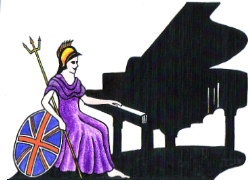Learn to Play the Piano Make Music
Piano Teacher lessons Theory in Edgware, London HA8

UK Piano Page


Experienced teacher of piano, keyboard, theory, GCSE/A-Level.
Preparation for auditions and exams for all instruments and vocal.
Ages 10 upwards and from around Grade 3 standard.
Ex- Head of Music of large local Comprehensive School (30 years)
Performer and conductor of more than 100 musicals and operas
Disclosure and Barring Service: yes
Qualification: GGSM London
Disclosure and Barring Service: yes
Qualification: GGSM London
Hampstead, London
England
Experienced piano teacher and accompanist
Great Harwood, Lancashire
England
I teach piano & violin from my own home in Great
Music Festival for performers and guests Our 10th
18-06-2022 12:30PM
The Morecambe Bay Piano Group was set up to extend
11-12-2021 01:00PM
The Morecambe Bay Piano Group was set up to extend
08-01-2022 01:00PM
The Morecambe Bay Piano Group was set up to extend
12-02-2022 01:00PM